WebRTC源码之视频质量统计数据的数据结构分析
WebRTC专题开嗨鸭 !!!一、 WebRTC 线程模型
2、WebRTC网络PhysicalSocketServer之WSAEventselect模型使用
二、 WebRTC媒体协商
1、WebRTC媒体协商之SDP中JsepSessionDescription类结构分析
三、 WebRTC 音频数据采集
四、 WebRTC 音频引擎(编解码和3A算法)
五、 WebRTC 视频数据采集
六、 WebRTC 视频引擎( 编解码)
七、 WebRTC 网络传输
2、WebRTC的ICE之Dtls/SSL/TLSv1.x协议详解
八、 WebRTC服务质量(Qos)
3、WebRTC之NACK、RTX 在什么时机判断丢包发送NACK请求和RTX丢包重传
九、 NetEQ
十、 Simulcast与SVC
前言
WebRTC是音视频行业的标杆, 如果要学习音视频, WebRTC是进入音视频行业最好方法, 里面可以有成熟方案, 例如:音频中3A 算法、网络评估、自适应码流、Simulcast、SVC等等 , 非常适合刚刚进入音视频行业小伙伴哈^_^ 我也是哦, 以后再音视频行业长期打算的小伙伴的学习项目。 里面有大量知识点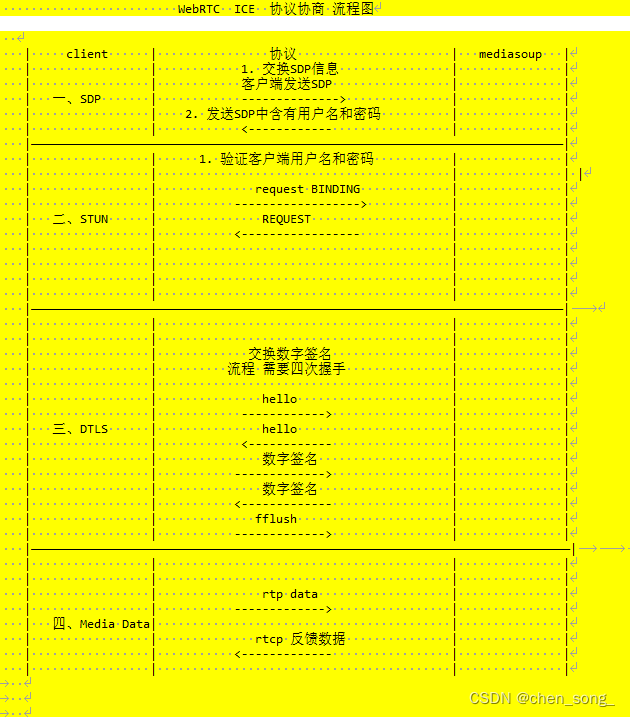
一、 STUN协议

- 包括20字节的STUN header
- Body中可以有0个或多个Attribute
二、 STUN协议头格式
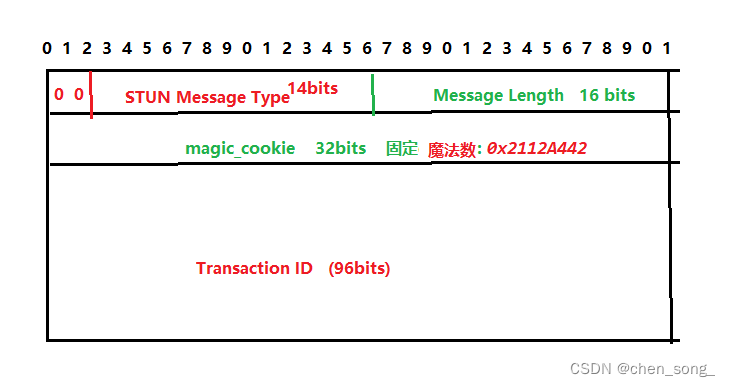
三、 STUN Header
-
2个字节
(16bit)类型
-
2个字节
(16bit)信息长度、不包括信息头
-
16个字节
(128bit)事务ID、请求与响应事务ID相同
四、STUN Message Type
- 前两位必须是00、以区分复用同一个端口时STUN协议
- 2位用于分类、即C0和C1
- 12 位用于定义请求/指示

1 、C0C1
- 0b00: 表示是一个请求
- 0b01: 表示是一个指示
- 0b10: 表式是请求成功的响应
- 0b11: 表示是请求失败的响应
2、 STUN信息类型
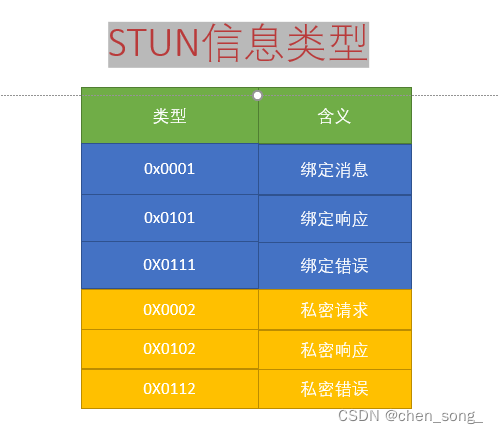
3 、大小端模式
大端模式: 数据的高字节保存在内存的低地址中
小端模式: 数据的高字节保存在内存的高地址中
网络字节顺序: 采用大端排序方式五、 StunMagicCookie
4字节、32位、固定值0x2112A442。通过它可以判断客户端是否可以支持某些属性
六、Transaction ID事务ID
12字节、96位、标识同一个事物的请求和响应
七、STUN Message Body
- 信息头后有0或多个属性
- 每个塑性进行TLV编码: Type、Length、Value
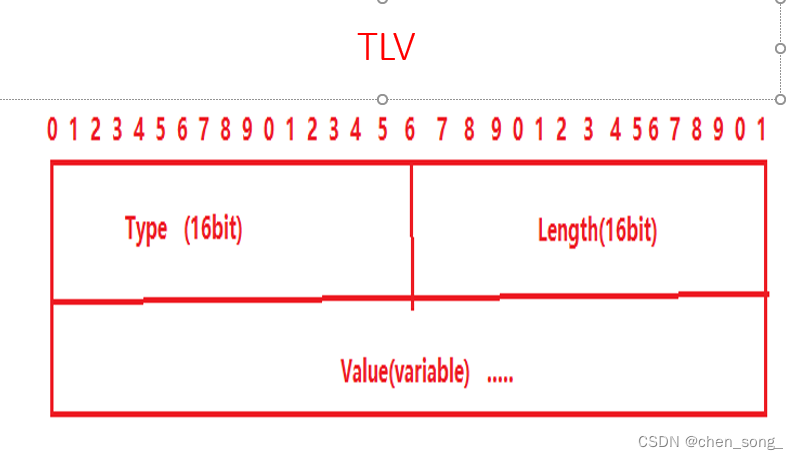
八、RFC 3489定义的属性
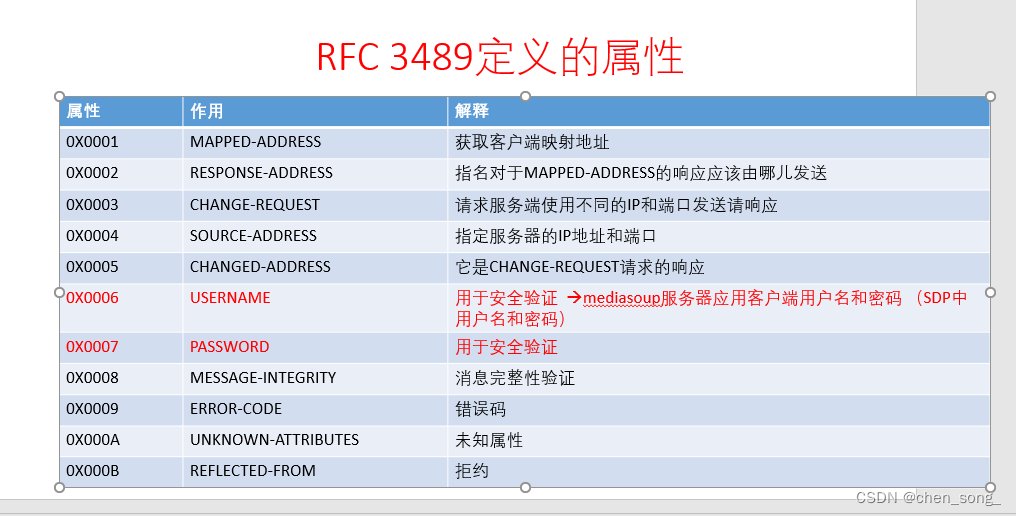
九、 WebRTC中代码
bool StunMessage::Read(ByteBufferReader* buf) {
if (!buf->ReadUInt16(&type_))
return false;
if (type_ & 0x8000) {
// RTP and RTCP set the MSB of first byte, since first two bits are version,
// and version is always 2 (10). If set, this is not a STUN packet.
return false;
}
if (!buf->ReadUInt16(&length_))
return false;
std::string magic_cookie;//0x2112A442
if (!buf->ReadString(&magic_cookie, kStunMagicCookieLength))
return false;
std::string transaction_id; // 12bit
if (!buf->ReadString(&transaction_id, kStunTransactionIdLength))
return false;
uint32_t magic_cookie_int;
static_assert(sizeof(magic_cookie_int) == kStunMagicCookieLength,
"Integer size mismatch: magic_cookie_int and kStunMagicCookie");
std::memcpy(&magic_cookie_int, magic_cookie.data(), sizeof(magic_cookie_int));
if (rtc::NetworkToHost32(magic_cookie_int) != kStunMagicCookie) {
// If magic cookie is invalid it means that the peer implements
// RFC3489 instead of RFC5389.
transaction_id.insert(0, magic_cookie);
}
RTC_DCHECK(IsValidTransactionId(transaction_id));
transaction_id_ = transaction_id;
reduced_transaction_id_ = ReduceTransactionId(transaction_id_);
printf(
"type_ = %u, magic_cookie = %s, transaction_id = %s, magic_cookie_int = "
"%u\n ",
type_, magic_cookie.c_str(), transaction_id.c_str(), magic_cookie_int);
if (length_ != buf->Length())
return false;
attrs_.resize(0);
size_t rest = buf->Length() - length_;
while (buf->Length() > rest) {
uint16_t attr_type, attr_length;
if (!buf->ReadUInt16(&attr_type))
return false;
if (!buf->ReadUInt16(&attr_length))
return false;
std::unique_ptr<StunAttribute> attr(
CreateAttribute(attr_type, attr_length));
if (!attr) {
// Skip any unknown or malformed attributes.
if ((attr_length % 4) != 0) {
attr_length += (4 - (attr_length % 4));
}
if (!buf->Consume(attr_length))
return false;
} else {
if (!attr->Read(buf))
return false;
attrs_.push_back(std::move(attr));
}
}
RTC_DCHECK(buf->Length() == rest);
return true;
}
总结:
WebRTC源码分析地址:https://github.com/chensongpoixs/cwebrtc